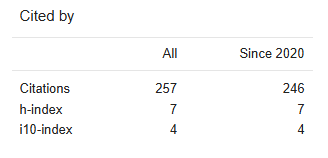Paper Details


Call For Papers
Volume 06, Issue 12
Frequency: 12 Issue per year
Paper Submission: Throughout the Month
Acceptance Notification: Within 2 days
Areas Covered: Multidisciplinary
Accepted Language: Multiple Languages
Journal Type: Online (e-Journal)
Announcement

Publish books with ISBN Number
- Edited Book
- Text Book
- Ph.D Thesis
- Conference Proceedings
ISSN Number:
2582-8568
Journal DOI No:
03.2021-11278686
Title:
SOCIAL ASPECT OF SANKARDEVA’S NEO-VAISHNAVISM AS A FACTOR OF ASSIMILATION AND INTEGRATION OF ASSAMESE SOCIETY
Authors:
Cite this Article:
,
SOCIAL ASPECT OF SANKARDEVA’S NEO-VAISHNAVISM AS A FACTOR OF ASSIMILATION AND INTEGRATION OF ASSAMESE SOCIETY, International Research Journal of Humanities and Interdisciplinary Studies (www.irjhis.com), ISSN : 2582-8568, Volume: 2, Issue: 4, Year: April 2021, Page No : 57-62,
Available at : http://irjhis.com/paper/IRJHIS2104010.pdf
Abstract:
In Hinduism it is believed that in needs of time and situation God comes to the earth as an incarnation. There are ten incarnations described in Bhagavad. Besides these ten forms there are some other great personalities who were born in some situations which were marked as extremely social and religiously critical. Every society has been facing some bleak situations and society becomes fragmented in different small groups in respect of religious belief. The religious life in medieval Assam before the rise of the Neovaishnavite movement was disintegrated and diversified one. But emergence of Sankardeva (1449-1568 AD) seemed to have mesmerized the people as a result of his Neo-vaishnavism and created conditions for harmonious living of people of diverse caste, communities and creeds. Sankardeva preached a very simple mode of religion which is absolutely free from ritualistic complexities and consisted of the easiest way of attaining liberation. He brought about a change in the religious outlook of the people through his teachings; he also generated a strong community feeling among his disciples, which satisfied the feudal requirement of the time. He appointed persons of different caste to spread his religion in their respective societies. Thus Assamese society got unified under the umbrella of one dominating culture, which paved the way for the formation of the greater Assamese society of which we are a part. In this paper, we shall try to highlight the social aspect of Sankardeva’s Neo-Vaishnavism as a factor of assimilation and integration of Assamese society. In doing so analytical method will be used in the light of available materials which include published and unpublished manuscripts of the Buranji’s, the Charit Puthis or the biography’s of Vaishnava saints and Assamese religious work.
Keywords:
Neo- Vaishnavism, Bhakti movement, Assimilation, Integration, Namghar, Bhaona, Satra.
Publication Details:
Published Paper ID: IRJHIS2104010
Registration ID: 20129
Published In: Volume: 2, Issue: 4, Year: April 2021
Page No: 57-62
ISSN Number: 2582-8568
Download Full Paper: Click Here
Article Preview:





